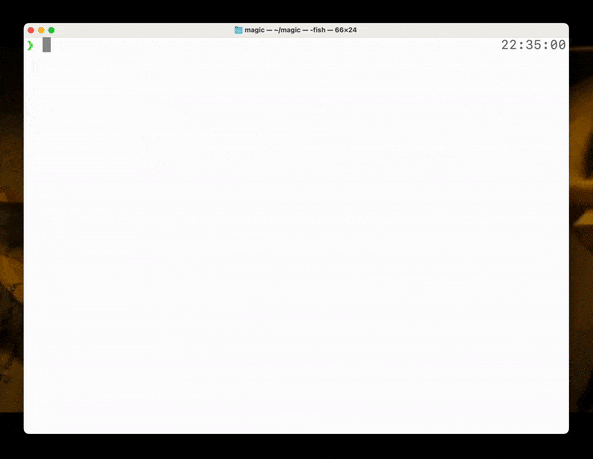"Universal" is cool, but I feel an urge to read something about
interpreters first before trying to write one on my own. Meanwhile
I've implemented a chill version
Shiny symbols
from typing import List, Union, Literal, TypedDict, Dict
def machine(tape: List) -> List:
# "The symbol on the scanned square may be called the 'scanned symbol'
# The 'scanned symbol' is the only one of which the machine is,
# so to speak, 'directly aware'."
awareness = 0
state: Union[int, Literal["HALT"]] = 0
class Action(TypedDict):
move: List
action: Literal["WRITE", "ERASE", "NONE"]
value: Union[int, str, None]
class Instruction(TypedDict):
cond: Union[int, str, None]
do: Action
next_state: Union[int, Literal["HALT"]]
instructions: Dict[int, List[Instruction]] = {
0: [ {"cond": 0, "do": {"move": ["r", 0], "action": "NONE", "value": None}, "next_state": 2},
{"cond": 1, "do": {"move": ["r", 0], "action": "ERASE", "value": None}, "next_state": 1} ],
1: [ {"cond": None, "do": {"move": ["r", 0], "action": "WRITE", "value": "f"}, "next_state": 1},
{"cond": "f", "do": {"move": ["r", 1], "action": "WRITE", "value": "l"}, "next_state": 1},
{"cond": "l", "do": {"move": ["r", 1], "action": "WRITE", "value": "o"}, "next_state": 1},
{"cond": "o", "do": {"move": ["r", 1], "action": "WRITE", "value": "w"}, "next_state": 1},
{"cond": "w", "do": {"move": ["r", 1], "action": "WRITE", "value": "e"}, "next_state": 1},
{"cond": "e", "do": {"move": ["r", 1], "action": "WRITE", "value": "r"}, "next_state": 1},
{"cond": "r", "do": {"move": ["r", 1], "action": "NONE", "value": None}, "next_state": "HALT"} ],
2: [ {"cond": 0, "do": {"move": ["r", 0], "action": "NONE", "value": None}, "next_state": "HALT"} ]
}
while state != "HALT":
current_instructions = instructions[state]
for instruction in current_instructions:
condition = instruction["cond"]
thing_to_do = instruction["do"]
action = thing_to_do["action"]
value = thing_to_do["value"]
next_state = instruction["next_state"]
move_to = thing_to_do["move"]
if tape[awareness] != condition:
continue
[direction, step] = move_to
if direction == "r":
next_awareness = awareness + step
else:
next_awareness = awareness - step
awareness = next_awareness
if action == "WRITE":
tape[awareness] = value
elif action == "ERASE":
tape[awareness] = None
state = next_state
break # Exit the for-loop after executing the instruction
return tape
# I don't want to implement self-expanding data structure, since it's
# feels less closer to the real machine, so Noneonneoneoe
the_tape = [1, None, None, None, None, None]
machine(the_tape)
It doesn't do anything fancy, and it's not even binary-encoded. It
just does stuff (erases the first symbol and writes "flower" into the
tape) if tape starts with 1, and does nothing if it starts from 0.
Super simple, but it encapsulates(?) the whole concept of Turing
Machine. Key components:

